All gifs in order
Mobile Suit Zeta Gundam (1985)
Megazone 23: Part II (1986)
Robot Carnival (Presence) (1987)
Mobile Suit Gundam: Char’s Counterattack (1988)
Akira (1988)
Angel Cop (1989)
Shin Hurricane Polymar (1996) AD only, he could have animated it because he is always h****
Kite (1998) Direction only
Elfen Lied (2004)
Joshikousei (2006)
Kite Liberator (2008)
Blood-C:The Last Dark (2012)
Wizard Barristers (2014) Direction only, 1 cut
Kizumonogatari Part 1: Iron-Blooded (2016)
Sin: Nanatsu no Taizai (2017) Presumed
Kokkoku (2018)Happy Birthday to Yasuomi Umetsu The veteran edge lord, the OG pervert of anime, and to a lot of people a legend that lost his touch. Umetsu has one of the most interesting career trajectories I have ever seen in a nearly 40 plus year animator journey. Getting his start in the early 80s Umetsu showcased a lot of talent as a Toei and Madhouse realist animator along the likes of Takashi Nakamura and Koji Morimoto. Through his connections with them and being placed on big projects with other powerhouse directors like Rintaro, he rose very fast through the ranks and eventually became an in demand AD and character designer. Umetsu’s debut designs on Megazone 23 Part II were insanely realistic, albeit a bit busy for animators to take on or draw themselves. This then lead Umetsu’s debut direction on the Presence section of Robot Carnival which was one of the more controversial portions of the film. Not due to it containing dialogue, but also having jerky and unnatural movement being more robotic than the actual robot in the short. From there Umetsu was still a top animator getting gigs on Char’s Counterattack, and Akira. Into the 90s Umetsu was still a decent animator, but had focused more of his efforts into character designs on Ellcia, Casshan: Robot Hunter, Gatchaman, and Shin Hurricane Polymar. These projects gave way to long term friendships with directors like Akiyuki Shinbo, and key animator Masashi Ishihama both of whom Umetsu would collaborate with numerous times in the coming decades. 1998 saw the release of his debut film Kite, an action packed hentai film pushing the boundaries with slick animation, and starting a decade spanning run of projects with the now defunct Studio Arms. This film perfected Umetsu’s style of drawing characters with eyes and features so sharp they could pierce diamonds, and a vulgar contrast of violence and erotic s***that was oh so X-rated. The 2000s had Umetsu working closely with Arms and abroad, but after he could not get funding for a self written film Kiss and Cry, he’d get closer to freelance KA, directing OPs and EDs, and occasionally running to Shaft to work with Shinbo. Though he isn’t a beloved animator like he used to be, Umetsu’s overtly sex-laden clarity in his direction and animation has been ambitious, cocky, and edgy for years, and he continues not to let up with show after show getting delayed until they happen. This is the story of a crazed OG horn dog, Yasuomi Umetsu.
From a young age Umetsu was interested in animation watching Tatsunoko Productions animations, and wanting to be an animator after hearing of the death of the company’s president Tatsuo Yoshida. From manga Umetsu admitted he was very attracted to the way artists like Osamu Tezuka drew women, although overtime Tezuka heavily changed his style due to it not being suitable in an educational medium. Umetsu also cited Go Nagai, Noboru Kawasaki, Fujio Akatsuka, and Fumiko Fumiko as major influences and the reason he “can still draw today”. Before animation came into fruition as a profession, Umetsu was heavily interested in becoming a manga artist in his formative years. He graduated university and moved to Tokyo, enrolling in the Chiyoda Institute of Technology. Umetsu’s manga dreams were unfortunately cut short when a submission for a Kodansha short he illustrated was not for him. After graduating a job search had gone awry, yet after being introduced by the head of one of the department’s he partook in he joined Tsuchida Productions. Due to the uncharacteristic animation the company took on Umetsu slacked off and got fired within 2 months of working there. This then lead to joining Toei Animation where he finally began to learn from other artists. After in-betweening on two Galaxy Express spinoff films Umetsu was mentored under future Fist of the North Star designer Masami Suda who taught him how to do original illustrations and animate dense and sharp movement. After brief AD on a Spider Man short and on Stop Hibari Kun, the work he did on Sparrow’s Boyfriend’s ninth episode was apparently so good that the senior staff grew resentment towards him, and he transferred to Madhouse coming on Genma Taisen in 1983.
Genma Taisen was a massive undertaking for Madhouse and spurred in a new generation of talent that would shake up the industry for the coming years

Directed by Rintaro, and written by Katsuhiro Otomo this rather ridiculous and nonsensical film was a reservoir for rising talent. First the senior staff is pretty important to mention, Yoshinori Kanada who had been the top dog of the anime industry had so much clout to be working here even debuting his legendary Kanada Dragon, a dragon consisting of fire or electricity. Osamu Nabeshima was another who had also worked long on mecha shows and with Rintaro. These were the idols that the younger staff, Takashi Nakamura and Koji Morimoto had looked up to. First Nakamura, he had done hundred of layout sheets for the film prioritizing easygoing and subtle gestures in his animation, where personality was also a huge characteristic. The 24 year old Morimoto was on Madhouse at the time and on the finale he still had not yet been converted over to realism as the spiraling lava lamp effects had been a product of likely heavy AD work by Takuo Noda. Then Umetsu who shockingly makes his KA debut here. One aspect of Umetsu’s animation here, and would basically be the case for the rest of his career was the amount of detail he packed into it I do not think even he kept up with it. The poses are a little rough and the movement jerks into position yet the drawings are so well realized. He’d go on to do another 2 plus minutes of the film with some of those rough traits in mind, but more tighter overallFor the next two years Umetsu was under the mentorship of Yoshiaki Kawajiri where they met on Genma Taisen. Kawajiri taught Umetsu “how to draw layouts that consciously consider perspective and eye level”. Umetsu animated on Barefoot Gen, and then Lensmen, Kawajiri’s debut series and also Galactic Patrol Lensmen which gave him a huge boost and a lot of eyes were placed on him throughout the industry. This also connected him with more rising animators including future Ghibli affiliates Yoshiyuki Momose and Shinji Otsuka, Shinya Ohira, Satoru Utsunomiya, Hiroyuki Kitakubo, Atsuko Fukushima, and Yoshiji Kigami. Utsunomiya out of the seven became close friends with Umetsu, enjoying free time together playing table tennis.
Due to the high quality of animation Umetsu was pumping out he was requested on to join what was likely his most iconic work of his early period, the opening 1, and 2 for Mobile Suit Zeta Gundam



Umetsu Solo KA
A resounding success in Umetsu’s hyper detailed animation with all the hallmarks of mid 80s proto-realism and effects drenched in Kanada’s fiery overlay, and Kawajiri’s aggressive and action close up layouts. The detail on the mechs is perfectly realized, but the character acting still has that stiff pose to pose approach on 1s that Umetsu still couldn’t shake off. However despite that, the OPs were rife with imagination and movement that had never been seen before in a Gundam OP.
This attracted in even more attention to Umetsu, and for the time being he returned to animation on other projects. The first would be Noboru Ishiguro’s Megazone 23 where he got his first storyboard credit, then The Dagger of Kamui, another Rintaro film where Umetsu was dealing with an even bigger roster of realists.

Umetsu under some Kawajiri boards feels a lot more well rounded here. Mainly due to a lesser reliance on 1s but also blurring the line with more effects, and better movement and anatomy.After being in the industry for only four years by this point, Umetsu got his first role on chief animation direction, and character design on Megazone 23: Part II released in 1986

For the starting phases of the project, Umetsu was originally placed on motorcycle and vehicle design, but after pleading with new director Ichiro Itano, and AIC president Toru Miura after showing his designs it was decided that he would be on character designs. In fact Umetsu even went to Part I’s character designer Toshiki Hirano to apologize for completely redesigning his original drawings. In fact during the film’s premiere Hirano was credited as a designer even no remnants of his original work was to be found at all.So lets get into Umetsu’s designs




One aspect that immediately stands out is the overwhelming amount of detail packed into the character designs. The small lips, sharp noses, and foundational hair would all be hallmarks of his work going into the future. Though there are some occasional deviations due to different animators brought on, Umetsu emphasized detail and detail first with a huge amount of shading whether it was hair, fabric, metal suits, mechs, and even buildings. He had very strict control over the drawings and was correction prone on the work. In his very own scene you can see Umetsu is most comfortable animating these characters on 1s doing some rather insane fabric animation paired with a very high degree of highlights and shading. Other animators probably weren’t too keen on getting them to move as Umetsu seems like the only one. The top animator for the film went to Shinya Ohira who reckoned with a lot of debris and explosion cuts in perhaps the most maximal ways possible, even for the 80s.Some of Umetsu’s production materials for the movie
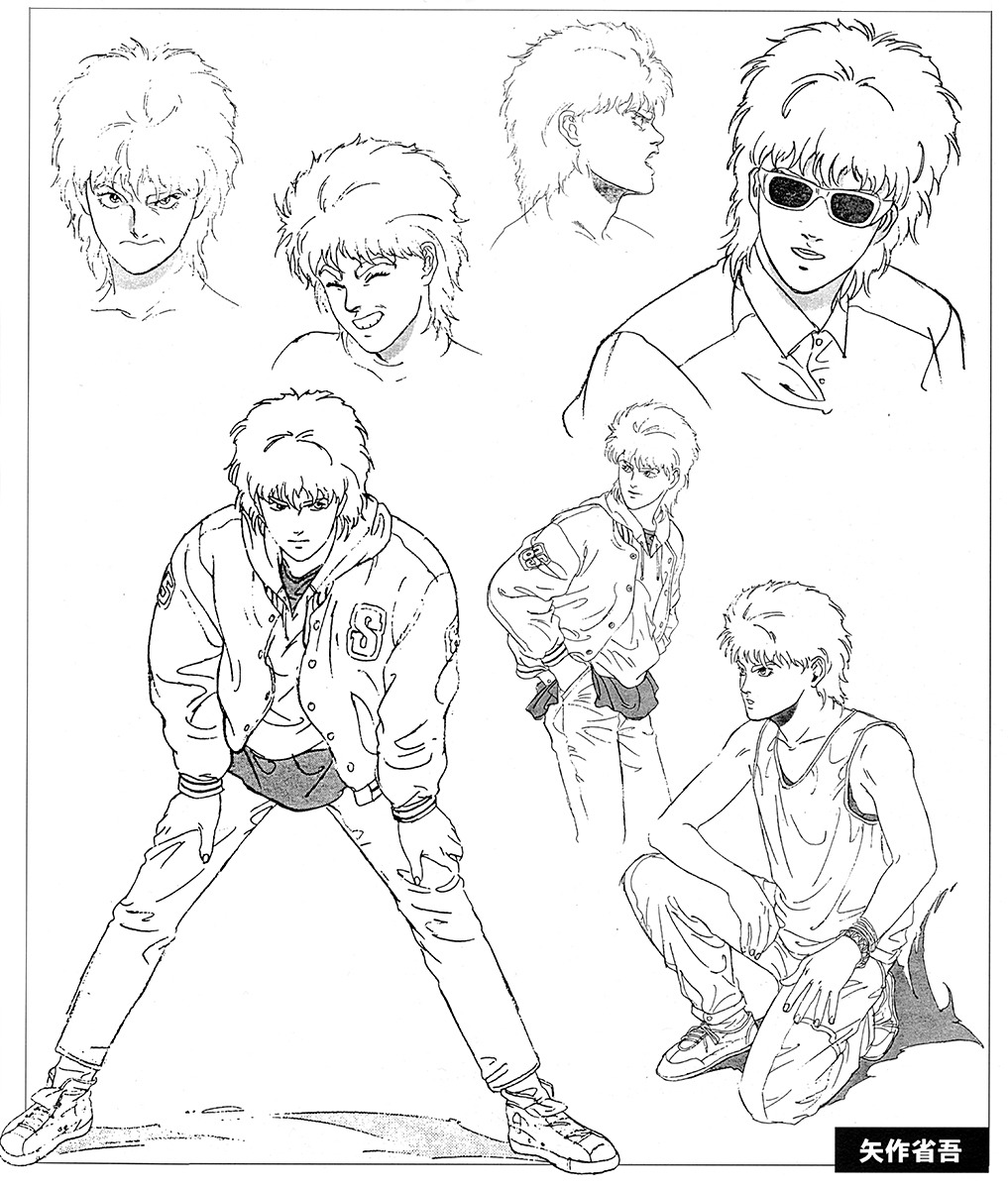
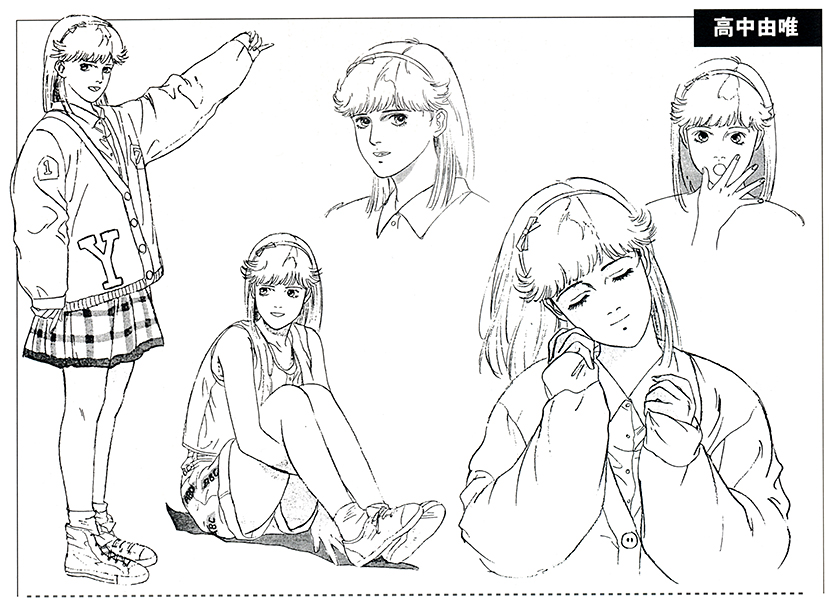
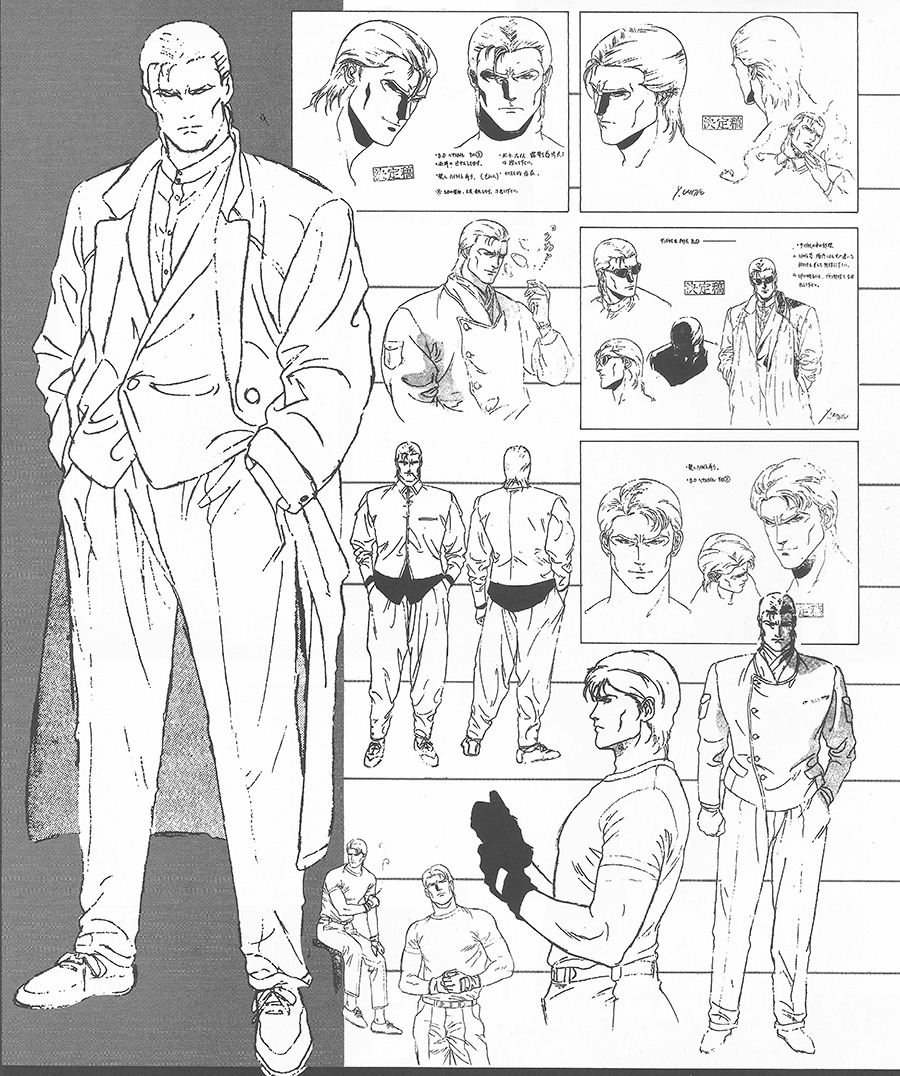
On Time Stranger Umetsu was placed onto effects work in the movie laying on a ton of detail for some of the effects cuts he was placed on.

Likely drawing influence from Shinya Ohira, Umetsu was a stunning effects animator for only this one movie. Such a variety of explosions, and internal and external shading are made within the explosions, even the funnel shaped explosions in the middle of this scene were used by Ohira a year later on a Dancouga film. Other scenes of a pod craft being chased are just filled with so much detail with the timing on 1s and impact frames making Umetsu look like an 80s version of Nozomu Abe. Also the addition of sensational background animation.The next year would effectively shake up Umetsu’s entire career on Robot Carnival where he made his debut directorial short “Presence”, all written, animated, and designed by himself.

Umetsu was just one of the nine animators brought on to the project. Katsuhiro Otomo was the project introductory leader, with coming shorts in the film helmed by Atsuko Fukushima, Koji Morimoto, Takashi Nakamura, Hiroyuki Kitakubo Mao Lamdo, Hiroyuki Kitazume, and Hidetoshi Oomori, altogether making the anime equivalent of Fantasia. Kitakubo was the one to ask Umetsu onto the film with the guise of subtle payback for changing Hirano’s designs on Megazone 23 under the guise he would be making his own originals.
Presence starts at 43:12, it is almost 20 minutes long
One of the only shorts with audible dialogue, the story is set in a strange future, with scenic views of a vaguely British European city paired with large foreboding mechanical skyscrapers as a backdrop. The story focuses on a man who has become obsessed with a female android he built after failing to connect emotionally with his wife and child. Once the android begins to have its own personality the man begins to panic leaving her behind. Two significant events happen in the future with the robot appearing before him and exploding, the second time where he is nearing death and walks away with it at the behest of his family.The first and most underrated element of Presence are the stunning backdrops by Hikaru Yamakawa. Though the setting has no formal world building you’re able to piece together this future society might have tried on occasion to regress to an old world way of living, or they have done that and occupied another planet. Umetsu leaves this intentionally vague


It is a very interesting settingNext the character designs. This was a transitory moment for Umetsu’s designs where the sharpness, and symmetrical and unnatural jaggedness of his designs came into play


I don’t think this looked particularly good on the male protagonist as the unusually shaped chins and triangle noses didn’t work with the curly and draconian hair. This did work with the female android as her design would start a shift in philosophy going forward. This and Lily Cat would be the last designs with the 80s poof hair and in to the 90s things became straighter and straighter.Lastly the animation, and while good ultimately failed bringing the level of realism Nakamura and Morimoto had already been slowly achieving. The designs of these characters are incredibly detailed with Umetsu putting that to the forefront, however, he and only he could possibly animate them. The motion itself in the short isn’t great, with so much emphasis on 1s and 2s that there is no sense of weight or inertia in the movement being completely full animation, which did not necessarily entail realism. Even Umetsu was not exactly happy with how the final project turned out, though this was important for him.
The next year two giant sized films helped Umetsu get back on his feet, the first being Char’s Counterattack

One of the only realists brought on to the film along with Shinya Ohira, and the Akira gen animator that wasn’t on Akira Mitsuo Iso. Umetsu got to handle many of the crowd and character laden sequences, doing a lot of Char’s own flashback scene. Kitazume was on character designs.Then the second was Akira

An assembly line of a majority of the animators Umetsu had worked with before, the film was the fully realized potential of Otomo’s vision, with Nakamura and Morimoto on AD at their most maximal strength. Though Umetsu would not likely work with any of these animators after the next five or so years (with the exception of Utsunomiya), the whole lineup was representative of how big and strong the anime industry’s talent pool had become, paired with the economic boom at the time seeing that talent flock in droves. Most of the entire Genma Taisen cast had returned with the exception of Kawajiri. There were a lot of people to account for including a swathe of TMS animators including Hiroyuki Aoyama, Shinji Hashimoto, Masaaki Endo, Makiko Futaki, and Toshio Kawaguchi. The newcomers like Hiroyuki Okiura, and Toshiyuki Inoue would cement their legacy as perhaps the best realists of all time, making their movement as life like as possible without immersion being lost. It was a mix of the old and the new, with the new being fresher and synthesizing better ideas. Some of the greatest effects and layouts ever put to anime are right hereUmetsu was placed towards the back half of the film with a brief fight between Kaneda and Tetsuo then the blast with the SOL beam.

Umetsu 1:07-1:39, 2:44-3:10 build up to the explosion only, the actual explosion is animated by Hiroyuki Aoyama
A nice tight action scene, Umetsu despite his timing feels more refined then ever working closely with Nakamura and Otomo’s layouts. His effects feel like they have some volume to them even if he was animating semi archaic folding smoke at the time. I especially like that he’s using more contrast with the quick bursts of action on 1s then being more liberal in-between with 2s and 3s. Great sceneIn-between his time on both films, Umetsu and also Yoshiji Kigami both did their only work for Ghibli on Grave of the Fireflies, Umetsu got a very important scene after a character died. Umetsu went to work on slew of OVAs for the following two years. He did a violent, but memorable scene for the first episode of Angel Cop one of his last projects with Itano, where he did corrections too.
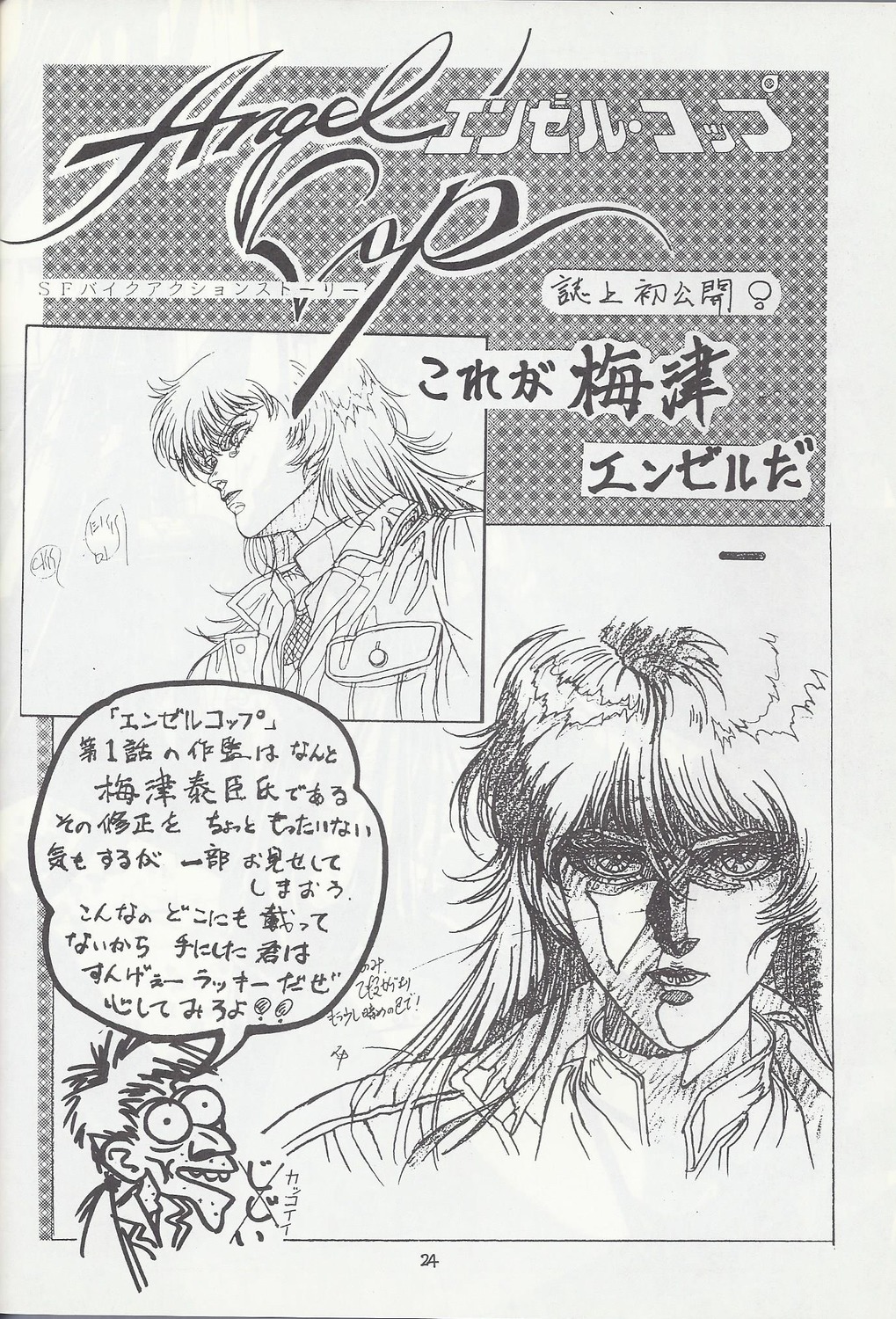
He’d continue up a friendship with Shinya Ohira and Shinji Hashimoto on the project as they continually improved in their animation.Devilman saw Umetsu doing his tightest and fully realized effect work probably due to involvement with several Ghibli animators on the same project. Umetsu also worked on Ohira and Hashimoto’s AD debut episode of The Hakkenden on the scene that likely invented flow animation. He then also joined the two, Iso, and Tatsuyuki Tanaka on Yumemakura Baku Twilight Theater where he was AD for the first episode, and character designer. Umetsu’s designs on the short were a lot more kookier then they have ever been, seemingly taking notes from the Disney inspired approach of Takashi Nakamura, and the big hands likely taken from the recently aired Utsunomiya project Gonsenzosama Banbanzai.
Now fully in the 90s Umetsu would start to get more character design commissions, with the first of many OVAs he did, Ellcia

One of the first show’s where Umetsu’s modern traits start to settle in. Though not perfect yet, Umetsu’s newfound mojo had excelled him into a way more comfortable art style. On the one hand he fully embraces the straight lines and settles into bigger swooping details that would begin to lessen over time. Notable traits would be implementing bangs hairstyles into many female characters. Some of the ear shapes and heads were representative of Utsunomiya’s style, with him drawing some scenes and looking completely different than the poster or model sheets. This was also one of the first projects where Umetsu worked with Masahiro Ando who would become on of the most exciting action animators of the 90s.Casshan: Robot Hunter in 1993 was next on the menu

Umetsu slowly, but surely was getting closer to the designs he wanted. As an adaptation of the 70s series it does a good job following the model sheets with being way more slick and dynamic looking

Ando all of a sudden had become the badass animator everyone knows and loves him for, and he made his presence known hereGatchaman was the next OVA, adapting another remake of an old Tatsunoko property

Once again becoming more sleeker and focused, Umetsu does another great job at modernizing the designs to fit into the 90s palette

He feels less prude with the character sheets and is able to instill a ton of variety into the body types and ages of the characters


Ando was yet again the action troubadour for the series, and the OVA also helped a young Shuichi Kaneko get on board for some his earliest pieces of animation.After doing KA and designs on smaller projects, Umetsu for the first time worked with Akiyuki Shibo, on Shin Hurricane Polymar or Hurricane Polymar: Holy Blood in 1996.


One of the last Tatsunoko projects Umetsu would do in the 90s. Shinbo had been making waves in the industry for a few years at this point. After his unorthodox approach on several episodes of Yu Yu Hakusho, Metal Fighter Miku, and Ninku, Tatsunoko saw the talent he had fostered and paired him up with Umetsu forming a killer combo. Shinbo’s style openly allows idiosyncrasies and creativity and the story and show moves just as freely as the action.
First onto Umetsu’s designs, much like Casshern and Gatchaman, Polymar has Umetsu further simplifying his designs into something that is more quantifiably readable then ever before.

After designing for a short time on the anime adaptation of Ai Yazawa’s Tenshi Nanka Ja Nai I feel like Umetsu incorporated elements of her punk fashion icon look into his own character designs for this series, with some of the doll like aspects of Yazawa’s art influencing characters like Teru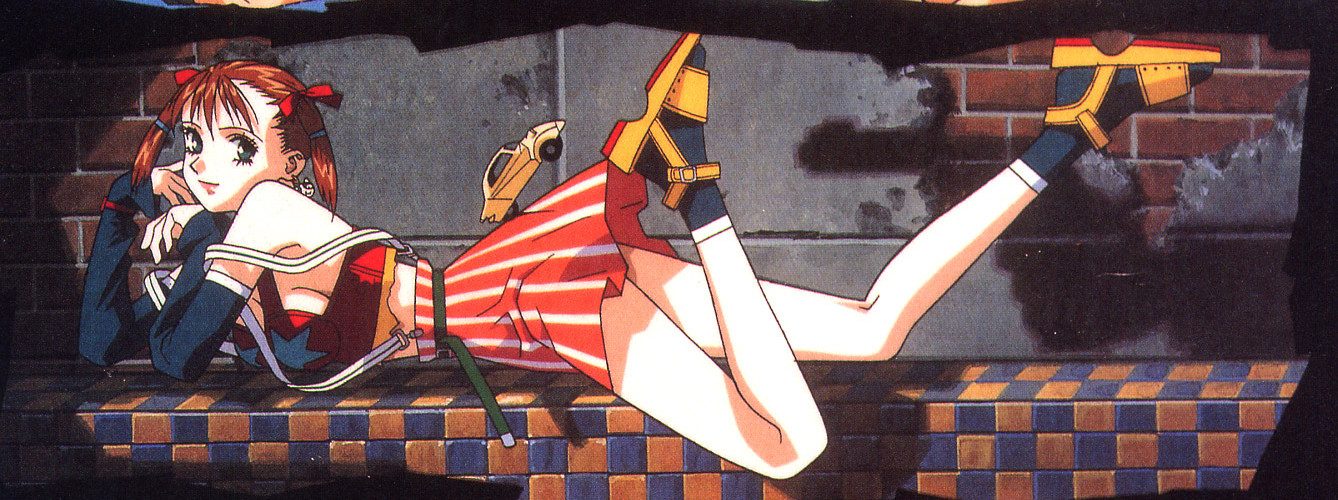
On animation Ando was once again the standout handling the brunt of action scenes across the three episodes. Yoh Yoshinari was the unique Gainax animator coming out of nowhere with his very acrobatic viscera. This was also the first time Umetsu and Masashi Ishihama would work together with Ishihama coming along to do some action
After two years of production Umetsu, released his first original feature length film (USA edition) Kite his first collaboration with Studio Arms


A film that screams Umetsu from the boarding, writing, and animation this movie was the culmination of everything he wanted, total unadulterated excess. Penetration, crime, murder, sex, in all their lewd and nude detail Kite held no bounds to adding entertainment to the hentai medium feeling like a reflection of what American culture really craved from action movies coming out in the 90s. This movie is not for the faint of heart, some scenes are trigger warning worthy with depictions of rape with just about the darkest Umetsu can go to, but what is it really about. Sawa is a schoolgirl who’s parents are murdered in cold blood, and is raised by guardians where she becomes an assassin. She is ruthless in killings with criminals, corrupt cops, and corporate types meeting their fate to her and exploding bullets. From there the premise gets more inane, with over the top and ravenous depictions of gore.

Umetsu knew what he was in for working with Arms who had been making hentai since the early 90s. First lets talk about the designs, this is where Umetsu pretty much struck gold with his aesthetic and character philosophy. Sawa is the prime example of that.


From her blood red killer eyes, to the seering outlines of the hair and clothing that can cut rock Umetsu feels like he started the teenager assassin trope with this look here. The combination with the heavily detailed three tone shading makes for a fantastic character layout. Other character designs take similar approaches to but it comes nowhere close to Sawa.For animation, the film did have some in-house Arms staff but I don’t believe any of them were familiar with action leading Umetsu to get the same teams from the Tatsunoko OVAS, Masahiro Ando, Masashi Ishihama, Shuichi Kaneko, and newcomer Tsutomu Oshiro were the top animators brought on for the action scenes though not the most mind blowing stuff it was still impressive. Also despite the film getting a remaster in sections, there was a remaster that unfortunately had footage added back in at last second with jarring quality changes in VHS quality and some in high quality restored color resulting in a terrible remaster. This film sparked a huge buzz among anime fans and Japanese media alike, with the OVA getting banned across the country and such. Although the film did reach American audiences with filmmakers like Rob Cohen, and Quentin Tarantino citing it as big influences on their craft moving forward.
After more freelance KA on Spriggan Umetsu did a number of side projects, one stand out one was the Castlevania 64 character designs
In 2000, Umetsu released his second hentai staple Mezzo Forte

With a more tighter script, and a bigger emphasis on action rather than sex, Mezzo Forte is a lot more easier of an entry to get into than Kite might be for most viewers. The plot is absolutely absurd and I recommend you just watch it to see what happens when someone as unhinged as Umetsu is allowed to pick up the pen to write a script.Character designs. Umetsu starts to make minor changes from his ethos on Kite ever so slightly going forward. Some of the head shapes are flatter, there is a more human-esque touch to the female designs, and it seems like the male designs took influence subtly from Cowboy Bebop with how slimeball some of them looked




Since priority was with action over anything, Umetsu once again had Ishihama and Kaneko at the forefront. Ando had gone to work at Bones, so some new blood was required with Kenichi Yamaguchi filling that void. A relative unknown not having a huge swathe of scenes, Yamaguchi’s action KA honest to god rivals Yutaka Nakamura’s work on Bebop around the same time it is just that goodNow we are in the 2000s, a time where Umetsu was in a bit of animation limbo trying to get projects greenlit whenever he could. He did designs for a super obscure anime called Nakoruru in 2002

Then in 2003, he got his first series release Mezzo DSA


Brighter then before thanks to the now digital era of animation Umetsu now had a series under his belt. With not an extremely high abundance of action Umetsu had to beef up a story that was a bit more easier to follow running the length of 13 episodes. It was not a wildly popular anime in that year, but he had trust with the Arms staff by this point.
The mid 2000s had Umetsu doing a lot of freelance animation, working on Ghost in the Shell: SAC, this brutal scene on Elfen Lied, and Beck working again with Satoru Utsunomiya. A standout in this era was Umetsu’s solo ka ending on the comedy ecchi series Girl’s High.

Umetsu solo KA
Completely changing the character designs just so he could draw them better this fun OP, works atypical to Umetsu’s sensibilities with a fun and upbeat mv.

























